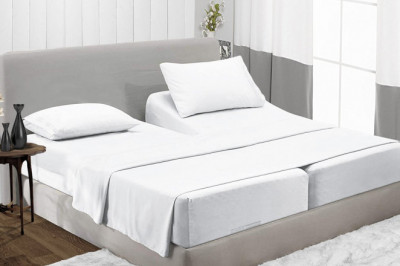views

Wood Coating Additives Market size is forecast to reach $870 million by 2026, after growing at a CAGR of 6% during 2021-2026 forecast period, owing to the increasing usage of wood coating additives such as nanofibrillated cellulose in various applications to protect the wood from bacteria, and other harmful organisms, and artificial weathering. In addition, coating additives enhance the appearance and longevity of coated surfaces, while increasing the substrate wetting, mar and gloss retention, intumescent retardant, chemical, UV, and corrosion resistance. The rapid growth of the infrastructure industry has increased the demand for wood coating additives; thereby, fueling the market growth. Furthermore, the flourishing food packaging industry is also expected to drive the wood coating additives industry substantially during the forecast period.
COVID-19 Impact
Various countries have declared a complete national lockdown as a result of the corona virus 2019 (COVID-19) outbreak. These decisions have restricted the movement of people and resulted in a complete shutdown of many businesses across many sectors. The construction industry, as a significant growth driver of the economy with no exception, has also been completely shut down. All the developments and projects were postponed until further notice. For instance, the construction output in Great Britain fell by a record 35.0% in Quarter 2 (Apr to June) 2020 compared with Quarter 1 (Jan to Mar) 2020. This value decline was due to the Corona Virus pandemic. With the decrease in building and construction operation, the demand for furniture has significantly fallen, which is having a major impact on the wood coating additives market.
Wood Coating Additives Market Segment Analysis – By Formulation
The solvent based system segment held the largest share in the wood coating additives market in 2020 and is growing at a CAGR of 6% during 2021-2026. A solvent based wood coating additives system offers a liquid protective layer that is primarily composed of organic compounds and applied to a material's surface to prevent corrosion. They are typically more resilient than water based wood coating additives system coatings during the curing time. These coatings have one major advantage over water based wood coating additives systems i.e. they are less susceptible to environmental conditions such as temperature and humidity during the curing phase. Humidity can prevent the water in a water-based system from evaporating, making them impractical in some climates. Thus, solvent based wood coating additives systems are preferred for applications in humid environments. All these superior properties of the solvent based system are the key factor anticipated to boost the demand for wood coating additives during the forecast period.
Request for Sample Report @ https://www.industryarc.com/pdfdownload.php?id=6348
Report Price: $ 4500 (Single User License)
Wood Coating Additives Market Segment Analysis – By Type
The Rheology modifier segment held a significant share in the wood coating additives market in 2020. For the optimal application of coatings on wood, it is necessary to adjust the rheology profile of the coating with the help of rheology modifiers. This can be managed by using associative thickeners based on polyurethanes. Polyurethane thickeners can be used solely or in combination with each other as well as with other types of thickeners (e.g. polyacrylates or cellulose ethers). In addition, rheology modifiers enable formulators to adjust the flow behavior of coatings, owing to which the wood coatings benefit from improved viscosity. Furthermore, it reduces dripping and a spattering of paint during roller or brush application, which is the major driving factor for the Rheology modifier additives during the forecast period.
Wood Coating Additives Market Segment Analysis – By End-Use Industry
The furniture segment held the largest share in the wood coating additives market in 2020 and is growing at a CAGR of 5% during 2021-2026, owing to the increasing usage of wood in the manufacturing of the furniture industry. This exceptionally versatile material is commonly used as a building material as it is a natural resource, which makes it readily available and economically feasible. It is remarkably strong in relation to its weight, provides good insulation from the cold, and can be fabricated into all kinds of shapes and sizes to fit practically any construction need. Pinewood and whatman filter paper are common substrates used in furniture fungal resistance. Also, wood is an environmentally sustainable product, biodegradable, renewable, and carries the lowest carbon footprint of any comparable building material. In addition, no high-energy fossil fuels are required to produce wood, unlike other common building materials such as brick, steel, or plastic owing to which wood is widely used in the manufacturing of furniture. And wood furniture requires preservation for which coating additives are extensively used over wood, which is the major factor driving the demand for wood coating additives in the furniture industry during the forecast period.
Wood Coating Additives Market Segment Analysis – By Geography
Asia-Pacific region held the largest share in the wood coating additives market in 2020 up to 36%, owing to the increasing demand for furniture in the region. The key factors driving the increase in demand for furniture are the growth of housing and commercial construction and also the increase in income levels that influence customers to adopt global lifestyle options, especially in urban affluent Indians. According to the Trade Promotion Council of India (TPCI), the Indian domestic furniture market is expected to expand at a CAGR of 12.91% from 2020 through 2024. It has been observed that for 2018 and from 2014-18, India’s furniture exports surged at CAGRs of 15% & 8.8% respectively, which is way higher than the world average. According to the United States Department of Agriculture (USDA), China remains the largest wood-based panel producer in the world, accounting for roughly half of global production. Production in 2019 was approximately 325 million meter cube, nine percent higher than in 2018 (299 million meter cube), driven by strong demand from decoration facilities. Thus, with an upsurge in the demand for furniture, the demand for wood coating additives will also subsequently increase to preserve the wooden furniture, which is anticipated to eventually drive the wood coating additives market in the APAC region during the forecast period.
Wood Coating Additives Market Drivers
Flourishing Food Industry
Products derived from wood are widely used in the packaging of food in the form of paper and cardboard. Paper is a very cheap, lightweight product with excellent printing capacity. Although it is very sensitive to moisture, it can be corrected with a combination of paper and other materials such as plastic or paraffin. The wooden packaging is specially designed for cooking or reheating in traditional ovens or microwave ovens. According to the International Trade Administration (ITA), there was an increase of 4.7% in food production in Russia. According to the United States Department of Agriculture (USDA), in 2018, the total value of all retail food and beverage sales in Japan was $479.29 billion (¥53,339 billion), an overall increase of 2.3 percent. According to the United States Department of Agriculture (USDA), China’s food processing industry continued to grow in 2017. Revenue climbed to $1.47 trillion, an increase of 6.3 percent compared with the previous year. The rising disposable income has resulted in the increasing demand for the food industry in various regions, which is further driving the growth of the food packaging industry market. And since additives improve or maintain the food's nutritive value, make food last longer, make food stay fresh for much longer owing to which the demand for coating additives in wood-based food packaging is increasing. Thus, the expanding food industry acts as a driver for the liquid nitrogen market.
Increasing Government Initiative Bolstering the Growth of building and infrastructure Industry In Various Regions
The building and construction industry is flourishing in countries such as India, and Singapore as governments are spending heavily on expanding the building and construction industry. The A government-wide program for a Circular Economy, aimed at developing a circular economy in the Netherlands by 2050 is boosting the construction sector in the country. The infrastructure sector has become the biggest focus area for the Government of India. India plans to spend US$ 1.4 trillion on infrastructure during 2019-23 to have a sustainable development of the country. The Government has suggested investment of Rs. 5,000,000 crore (US$ 750 billion) for railways infrastructure from 2018-30. And wood-based products such as furniture are often used in the construction industry. And these wood products to be durable and resistant require coating additives. Hence, with the increase in construction activities across the globe, the demand for wood coating additives will be foreseen to grow enormously. Thus, such government investments and initiatives in the construction industry act as a driver for the market.
Download Sample Report @ https://www.industryarc.com/pdfdownload.php?id=6348
Wood Coating Additives Market Segment Analysis Challenges
Presence of Other Substitute Materials
Most wood coatings are done either in a short-term artificial weathering chamber or long-term on an outdoor rack/fence. In both cases, the coatings are exposed to both ultraviolet radiation and water. As moisture is absorbed into the wood structure, the wood swells in proportion to the volume of water absorbed. As moisture is lost, the wood shrinks in proportion to the volume of the water lost. Thus, moisture in the wood end grain is responsible for coating failures. Also, the wood material may be too hard or rough for products like soft fruits, and therefore liners of soft material may be needed, which further increases the expenses owing to which polymeric materials are gaining popularity. Moreover, the continuous manufacturing of wooden-based products such as furniture, crates, pallets, containers, and more have put an extra claim on the natural forest resources, leading to deforestation. All these disadvantages of wood-based products are unlatching doors for other immediate substitute materials such as metal, polymer, composites, and more. Thus, the demand for wood may see a downfall, which may hinder the wood coating additives market growth during the forecast period.
Wood Coating Additives Market Landscape
Technology launches, acquisitions, and R&D activities are key strategies adopted by players in the wood coating additives market. Major players in the wood coating additives market are BYK Additives and Instruments, AkzoNobel N.V., Ashland Inc., BASF SE, DOXA Chemical, Arkema, The DOW Chemical Company, Sherwin-Williams, Nexeo Solutions, and Münzing.
Acquisitions/Technology Launches
In November 2019, AkzoNobel invested $55 million to transform its wood coatings facility in High Point, North Carolina, and further strengthen the company’s market position in North America.
In October 2019, BASF introduced a new silicone wetting agent-“Hydropalat® WE 3225”, which combines excellent substrate wetting with pronounced defoaming performance. It is designed for use in high-end water-based industrial and automotive coatings and especially wood coatings that require excellent wood grain accentuation.
In October 2019, BASF launched a new high molecular weight dispersing agent-“Dispex® Ultra PX 4290”. Dispex® Ultra PX 4290 in response to surging market demand for a dispersing agent, which enables broad applicability in both inorganic and organic pigments and fillers used in water-based automotive OEM and refinishes coatings, industrial coatings, and wood coatings.
Key Takeaways
Asia-Pacific dominates the wood coating additives market, owing to the increasing building & infrastructure activities in the APAC due to various government initiatives such as “100 smart cities” and “Housing for all by 2022”.
The primary purpose of using coating additives in wood is to manufacture superior quality wood surfaces. Additives are often used in wood coatings for a variety of purposes such as better stabilization, hygiene, and decoration of wood.
The coating additives also add some extensive properties to the wooden material such as moisture-resistant, anti-bacterial solution, improved hardness, better appearance, and more. These enhanced properties of wood coating additives are projected to increase the market growth.
However, high regulation on coatings due to its high emission of volatile organic compounds and awareness on damage for deforestation is projected to hinder the growth of wood coatings, which indirectly affects the demand for wood coating additives.
Due to the Covid-19 pandemic, most of the countries have gone under lockdown, due to which various building and construction operations are disruptively stopped, which is hampering the wood coating additives market growth.
Related Reports :
A. Wood Coatings Market
https://www.industryarc.com/Report/11720/wood-coatings-market.html
B. Coating Additives Market
https://www.industryarc.com/Report/11678/coating-additives-market.html
For more Chemicals and Materials Market reports, Please click here
About IndustryARC: IndustryARC primarily focuses on Cutting Edge Technologies and Newer Applications market research. Our Custom Research Services are designed to provide insights on the constant flux in the global supply-demand gap of markets. Our strong team of analysts enables us to meet the client research needs at a rapid speed, with a variety of options for your business. Any other custom requirements can be discussed with our team, drop an e-mail to sales@industryarc.com to discuss more about our consulting services.












